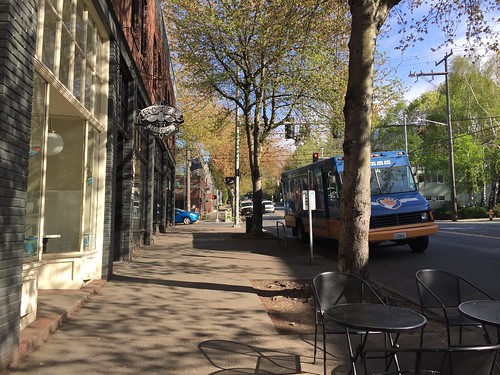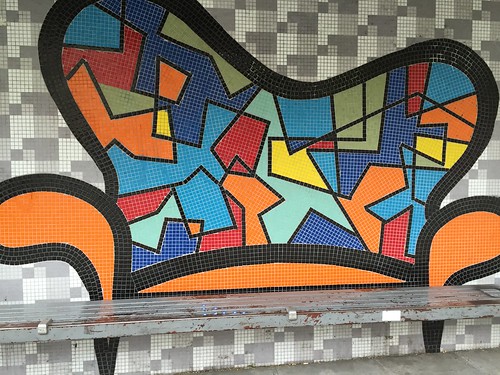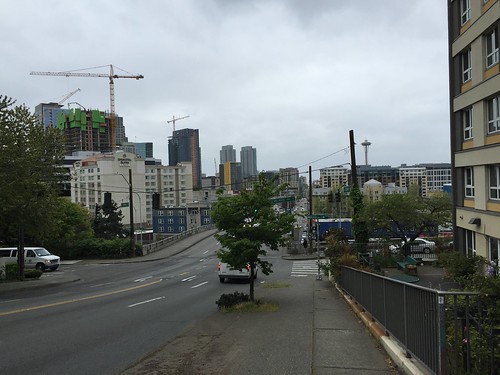I excavated my wallet for change. Five, twenty five … yes! I pieced together two dollars and fifty cents, the bus fare in Seattle. Residents may tap in and out with thick Orca cards, but it’s cheaper for visitors to hoard their change. It is a small price to pay — figuratively and literally — and not just because Seattle is the rare American city non-drivers like me can navigate solo. Seattle’s low-cost public transport supports their interpretation of an American hub city for the twenty-first century.
I come from New York. I live in London. I’m fluent in urban life. But counting quarters for Seattle bus rides introduced me to a new form of dynamism. While large cities require infrastructure to move millions of residents daily, smaller cities tend to overlook such investments. DC’s metro recently paused service. LA’s buses are infamous signs of urban blight. European cities, on the other hand, tend to boast walkable central zones and offer public transport only to the residential outskirts. In Seattle, however, the bus connects urban residents to the city, allowing people to move, work and play in a sprawling metropolitan area. The city might be small, but its public transport is dynamic.
But this isn’t the strip mall and ranch house sprawl that characterizes American suburbs. Seattle occupies a vast but compact space. The central business district crams together shops, glass office buildings and lunch counters into a busy business schedule. Walk for thirty or forty minutes and you’ll discover a mirror city that plays in the CBD’s off time. This is the face lures visitors to the Pacific Northwest. If downtown Seattle adds people to the desolate American cityscape, the residential centre adds the personality and creativity missing from big and small urban centers alike.
Unlike New York City or London, Seattle retains an atmosphere of becoming. Whereas New York transplants search for their patch of the city’s personality quilt, Seattle asks newbies to develop its landscape. Creativity remains to be created. Bus stops invite residents to sit with mosaics of chairs. Flowers adorn the sidewalks. Tables and chairs beg for al fresco lunches. In Seattle, residents design the city’s landscape.
New York deters such generation. The city unfolds before you already generated. Bus stops in New York are uninviting poles that beg would-be riders to catch the subway. Parks sort runners, bikers, walkers and drivers according to their roles. Crowded public seating prevents lingering. If Seattlites make their city, New Yorkers squeeze into the niches previously established in the urban jungle.
Maybe I’m biased. I grew up in New York. The metropolis has ascribed me roles since I was toddler able to duck under subway turnstiles. Had I been raised in Seattle, maybe I too would dread navigating their urban ecosystems. But I’m not the only visitor struck by Seattle’s creative milieu. In recent years, the city has gained a reputation at the forefront of sustainable urbanism. It’s not just their bus system —their trams and light rail also equips residents with effective and affordable access to the city. Cultural events are similarly accessible and inspiring. Local government boasts a practical progressive viewpoint that puts Bernie Sanders to shame. Not only does Seattle seem dynamic, they act like it.
Back in New York and grumbling about pretentious NYU students gabbing at my favorite café, I wonder what I crave in city life. Do I desire dynamism? Or do I desire a script? Some cities enchant with the possibility of creation (in addition to Seattle, I nominate Bristol — where I’ve lived — and Ghent — where I’ve only visited — as other spots with similarly spirited milieux). Some cities enrapture with a defined script. I dream of both. I dream of developing an urban character while being certain that where I live is important with a capital ‘I’. Can the two be reconciled? I don’t know. But if so, I hope I can find it.


